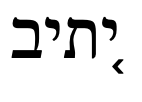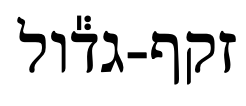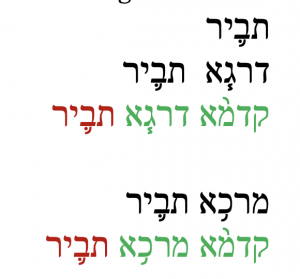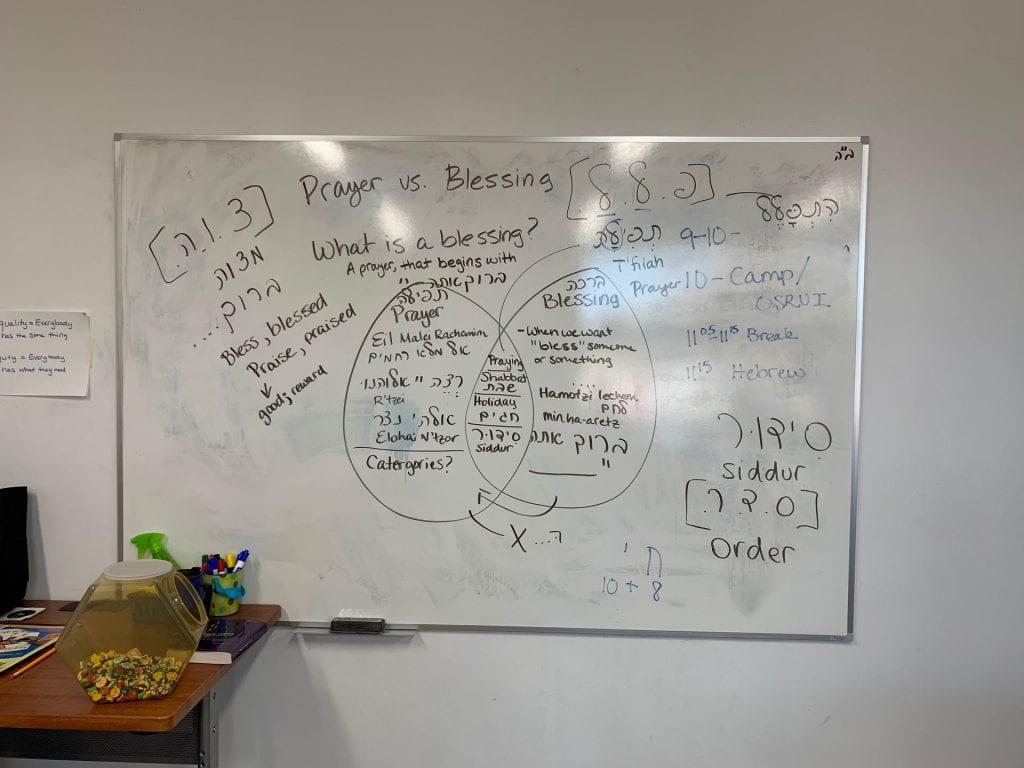Here are the highlights of what we have been working on in 6th grade in November:
 Katon Clause – Y’tiv and Zakef Gadol
Katon Clause – Y’tiv and Zakef Gadol
To conclude the 3rd clause, Katon, we add the symbols Y’tiv and Zakef-Gadol. Both are highlighted in green. Some fun facts about Y’tiv: The symbol for Y’tiv always comes before the word (to the right of the word), Y’tiv is always followed by Katon or Munach Katon and Y’tiv pauses, it’s a separator (mafsik). To hear and practice the Y’tiv symbol: https://youtu.be/nktsMqTvX0o
 Zakef-Gadol occurs occasionally in Torah, and can exist all on its own. It acts like a mini-Katon clause. You can hear Zakef-Gadol here: https://youtu.be/QQw6fArAvfU. Zakef-Gadol, like Katon, is a separator, it pauses.
Zakef-Gadol occurs occasionally in Torah, and can exist all on its own. It acts like a mini-Katon clause. You can hear Zakef-Gadol here: https://youtu.be/QQw6fArAvfU. Zakef-Gadol, like Katon, is a separator, it pauses.
T’vir Clause
T’vir is highlighted in blue, and features just a few new symbols: דרגא Darga and תביר T’vir. You can hear the sound of each and learn the hand signs here: https://youtu.be/ogqmBK7Sm7A. T’vir is the sound of the “Amein” recited by a person about to read Torah, following someone else chanting the Torah blessings. The T’vir clause is often served by the trope קדמא Kadma, which we learned in our last clause קטן Katon. Additionally, תביר T’vir can be served by a special מרכא Mercha, which sounds like דרגא Darga, but without the middle two notes.
On Sundays, we have been exploring the Hebrew roots and their meanings in the context of Jewish practice and prayer:
[צוה] Root of words such as Mitzvah (commandment / good deed)
[פפל] Root of words such as T’filah (prayer) and Hitpaleil (to pray)
[ברכ] Root of words such as B’rachah (blessing)
[סדר] Root of words such as Seder (order) and Siddur (prayer book)
We have been exploring our prayer book to help us define what is a blessing, and what is prayer and the questions, how does understanding these concepts help us to understand what Jews pray for, and why we pray?

